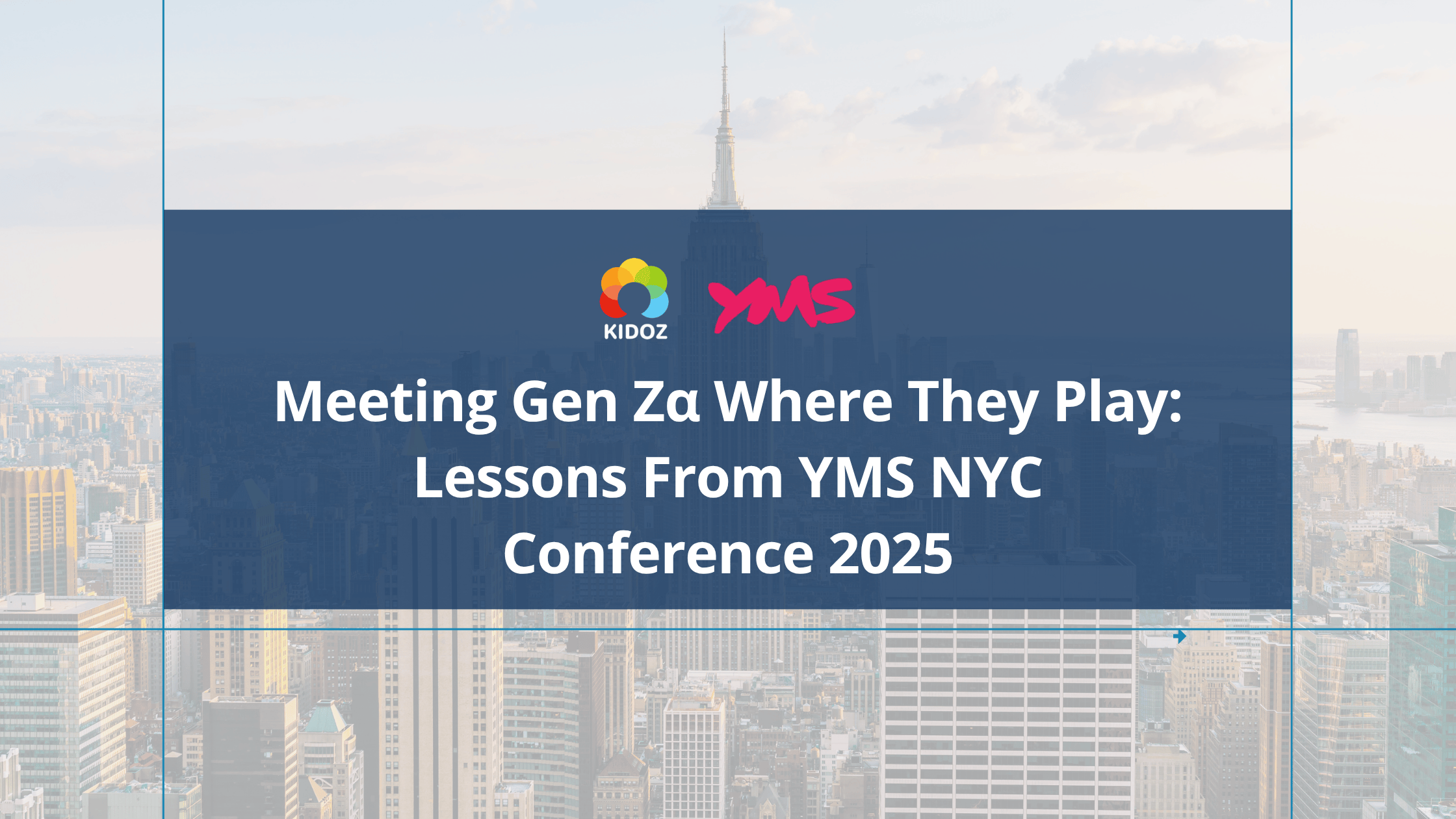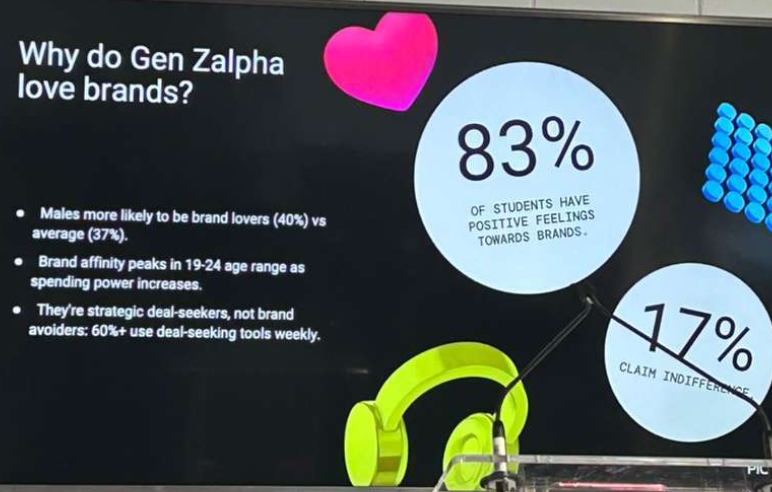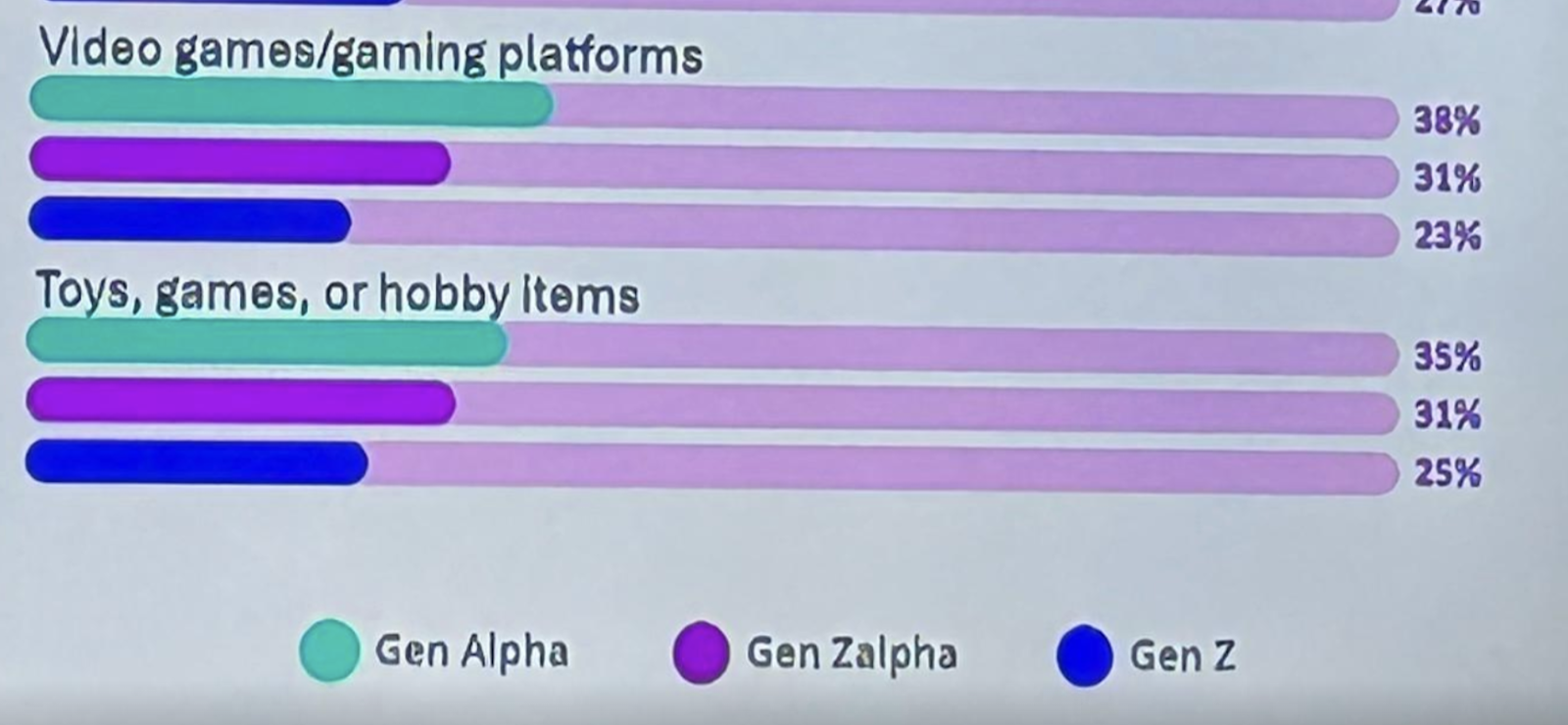
At this year’s YMS (Youth Marketing Strategy) Conference in NYC, one message came through loud and clear: Gen Zα loves brands. In fact, 83% of young people say they love the brands they interact with most. But love today looks different - it’s not about logos or taglines. It’s about how, where, and why you show up. If brands want to reach this generation, they have to meet them where they already are, and in ways that feel genuine, not intrusive.

Meet Gen Zα Where They Are
Gen Z and Gen Alpha don’t dislike advertising. They just dislike feeling advertised to. They are hyper-aware of algorithms and quick to tune out anything that feels forced.
The biggest keyword that surfaced across YMS 2025 was relevance. For brands, that means every channel you advertise in must meet your audience contextually - speaking to their mindset, their environment, and their expectations. Relevance isn’t about louder creative; it’s about smarter context.
We know where they are. More than 80% of them spend time in gaming environments every week. And more importantly, 38% of Gen Alpha engage with brands to make a purchase through gaming platforms, which is more than Gen Z and Gen Zα. Gaming isn’t just a channel for attention; it’s a key space for discovery and decision-making.


Reaching them there requires a shift in approach. It’s not about pushing pre-rolls or banners; it’s about creating experiences that feel like a natural part of their world.
That’s why interactive formats matter. They transform advertising from interruption into participation. Because in the end, the next generation doesn’t just want ads that understand their taste; they want experiences that respect their intelligence.
Brand Affinity Starts Early
Today’s Gen Z built their brand affinity ten years ago. What that means for marketers is that the time to build trust with Gen Alpha is now.
Early, positive, and responsible engagement sets the foundation for long-term loyalty. Brands that show up safely and consistently across kid-appropriate environments aren’t just winning short-term attention; they’re building decade-long relationships.
Why “A Social Strategy” Isn’t Enough
Another theme from YMS: specificity is the new strategy. Saying you have a “social strategy” isn’t enough. In practice, you need a TikTok strategy, a YouTube strategy, and a Shorts or Reels strategy. Each platform’s audience behavior and creative language are different.
The same applies to gaming. If your “gaming strategy” only covers Roblox and Fortnite, you’re missing the bigger picture. Gen Zα plays across dozens of ecosystems - mobile, sandbox, casual, and console - and each represents a different opportunity for brand engagement.
The Return of Traditional Formats
Another fascinating YMS takeaway: Gen Alpha is more open to traditional ads than Gen Z. According to data shared at the conference, younger audiences are surprisingly receptive to online video and classic storytelling, especially when those ads show products in use and feel relatable.
So if you’re not amplifying your online video (OLV) within the gaming environments where this audience spends a significant amount of their time, you’re missing a major opportunity. Over 90% of Gen Alpha play games daily, and they’re paying attention to what’s on-screen.

Where Love Meets Scale
If 83% of young people love brands, the challenge isn’t whether they’ll connect; it’s how. To earn that connection, brands need to show up with care: in the right context, with the right creative, and on platforms where young audiences already feel at home. That’s what Kidoz enables; scaled, brand-safe, and emotionally intelligent advertising built for the way Gen Zα experiences media today. Because if love for brands starts young, responsibility must start even younger.
Want to connect with Gen Zα audiences where they play, learn, and grow? Get in touch with us today.


